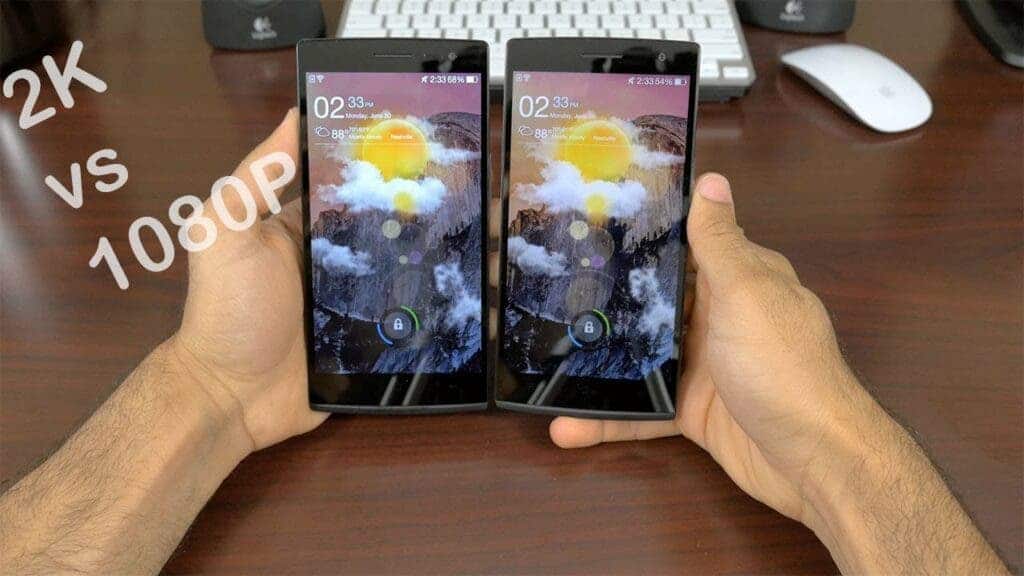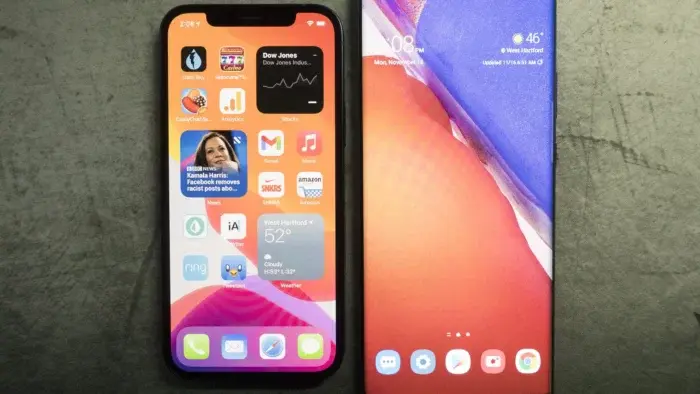Many years ago, Apple leads the smartphone market in terms of innovation and other follow. The company is usually the first to roll out a feature and Chinese brands will simply water it down to make it cheaper. However, it appears that Chinese brands no longer look to Apple. In fact, the reverse is now the case in a different way. Chinese brands are now far ahead in terms of innovation but Apple always seeks to upgrade whatever Chinese brands bring to the market. Looking at technologies in video, battery life, fast charging, and screen tracks, Chinese brands are ahead.

Just like when Apple was using LCD screens, Android phone manufacturers were already scrambling to use OLED screens. Now that Android brands are already rolling out 2K screens, Apple seem to be dragging its feet
What is Apple waiting for?
Some people can’t help but ask, why doesn’t Apple use a 2K screen for the iPhone? We all know that most iPhone users wouldn’t care, instead, they will say “Why should I use a 2K screen for the iPhone?”. However, tech enthusiasts have sincere concerns. As we all know, Apple basically does not use the screen to make a fuss. The reason why the iPhone has such a large user group is mainly because of its powerful chip and the iOS system.
However, the chips and systems of Android phones are almost the same. The only difference is the technical adjustment and algorithm of the manufacturer. Therefore, the 2K screen is one of the main highlights of the promotion.
In fact, as an ordinary consumer, to be honest, even if you have an Android phone with a 2K screen in your hand, it does not have much substantial impact on visual perception. Even if you have a 1080P phone in your hand, you may not know the difference. Ordinary users will watch videos, browse web pages and play games normally without noticing any difference. While ordinary users know that 2K screen will be better than 1080P, they cant tell the difference in the end.
Chinese brands Vs Apple
Many Chinese manufacturers now has 2K screens with resolution up to 3216 x 1440 pixels. When we compare this to the 2778 x 1284 resolution of the iPhone 13 Pro Max, it is obviously not up to the standard of the 2K screen. However, it is undeniable that the iPhone is still selling well even without a 2K screen.
There are a couple of reasons why the screen resolution may not need to be so high. This could probably be the reason why Apple do not really care. The look and feel of the display are not a function of the resolution. What the focus should be on is the screen size and the pixel density (PPI).
The pixel density represents the number of pixels per inch of the screen. The higher the value, the finer the picture. So at the same resolution, different sizes and pixel densities end up rendering different results.
Taking the iPhone 13 Pro Max as an example, it has a 6.7-inch (diagonal) OLED full screen with a resolution of 2778 x 1284 pixels and a pixel density of 458 PPI. Take a Chinese flagship with a 2K screen for comparison. It also has a 6.7-inch (diagonal) screen with a resolution of 3216 x 1440 and a pixel density of 525 PPI.
From this, it would appear as though 2K display is necessary. However, it is important to note that Apple uses pixel density as a standard to formulate screens, not resolution. Let’s just say, since the concept of “Retina Display” proposed by Steve Jobs when the iPhone 4 was released, the standard of mobile phone screen display has been based on Apple’s standard.
Apple’s “Retina screen”
At the release of the iPhone 4, Apple put 960 x 640 pixels on a 3.5-inch screen and the pixel density of this screen hit 330 PPI.
Jobs said, “When you’re holding something 10-12 inches away from you, as long as the pixel density reaches 300 PPI, your retina can’t distinguish the pixels”. This means that increasing the resolution in this case becomes an unnecessary cost.
This is Apple’s original definition of “Retina screen”, and the pixel density of the iPhone 4 screen has also reached 326ppi. At that time, Android phone manufacturers were forced to replace all 720P that did not meet the retina screen standard with 1080P because of this concept of Jobs. Subsequently, when Apple moved from LCD displays to OLEDs, the pixel density increased to 450 PPI and that is what it uses until today.
Are 2K screens relevant for ordinary users?
In truth, ordinary users will not need a 2K display. However, Android manufacturers prefer to launch 2K displays so as to significantly increase the pixel density. Thus, this is only a marketing gimmick and it does not make the display significantly better. Generally, the screen performance will be the same. The 2K screen will not be significantly better than the display on iPhones at the moment.
Let’s take a look at Apple again. Is it really because Apple can not match a 2K screen thats why it is not using it? Probably not. The truth is that the 2K display is not necessary for Apple at the moment. When its marketing situation becomes tight, it might just consider the 2K screen as a marketing gimmick.
Theoretically speaking, 2K is really excellent, but for the human eye, as long as there is no obvious graininess when looking at the mobile phone from a normal distance, there is no need for 2K. Unless you use a microscope to view the screen or place the display further away from the eyes, you will not know the difference between a 2K and a 1080P smartphone. In truth, if you look carefully, you can tell the difference at first glance. However, most people do not look at their smartphones that way.
Another critical point is that 2K screens generally consumes more power. Considering Apple’s situation with its battery, it will naturally consider this point. With a 2K screen, Apple may need to increase the mAh of its devices as well as increase its fast charge capacity. The company is probably not willing to make these changes for a feature that will not make a significant difference.





